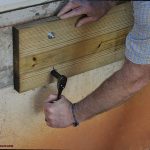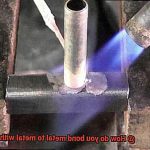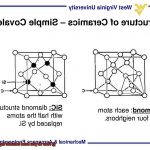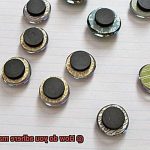Welcome to our blog where we explore the exciting world of bonding aluminum without welding. Whether you’re a DIY enthusiast, a metal fabricator, or just curious about alternative joining methods, this post is for you.
Welding has always been the go-to method for bonding aluminum, but what if you don’t have the gear or know-how? Don’t worry. There are plenty of techniques out there that can give you strong and long-lasting bonds without the need for crazy heat or expensive welding machines.
In this article, we’ll dive into some of the best methods like adhesive bonding, mechanical fastening, and brazing. We’ll get into all the nitty-gritty details – their pros and cons, where they work best – so whether you’re fixing up an aluminum boat or building something totally unique, stick around as we uncover the secrets of bonding aluminum without welding.
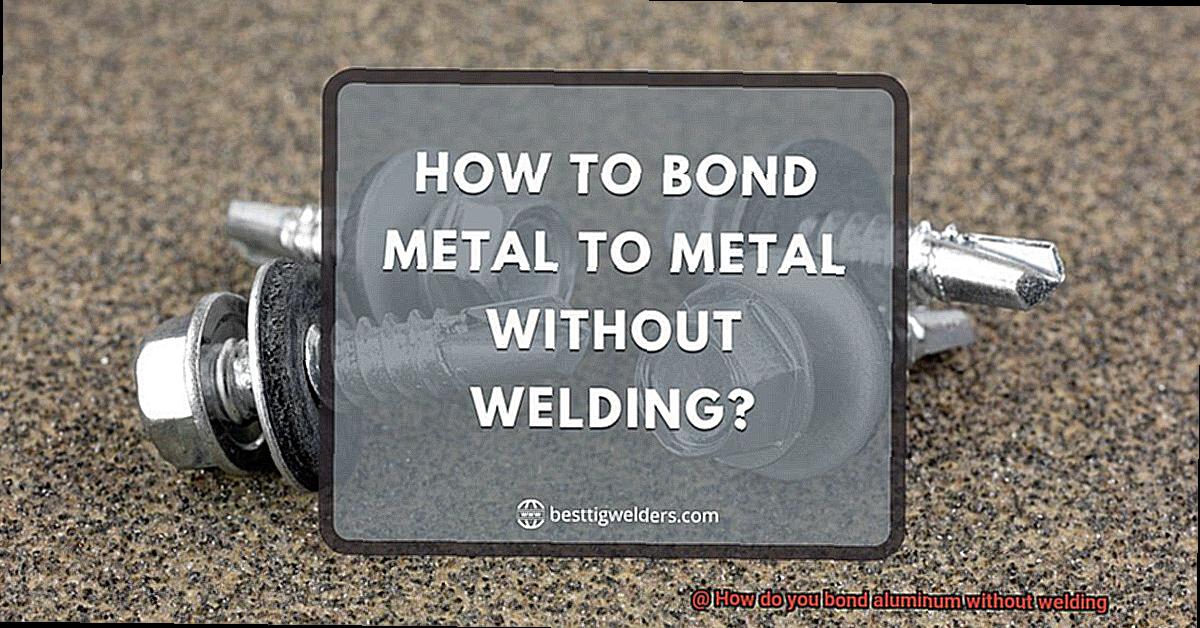
Join us on this journey to discover alternative ways to create solid and permanent bonds with aluminum – no welding torch required. Let’s break free from traditional welding and unlock a whole new world of creativity and practicality in working with this amazing metal.
Adhesive Bonding: Overview of Benefits and Considerations
Contents
- 1 Adhesive Bonding: Overview of Benefits and Considerations
- 2 Selecting the Right Adhesive for Bonding Aluminum
- 3 Mechanical Fastening: Overview of Benefits and Considerations
- 4 Selecting the Right Fasteners for Bonding Aluminum
- 5 Soldering: Overview of Benefits and Considerations
- 6 Selecting the Right Filler Metal for Soldering Aluminum
- 7 Proper Preparation for Successful Soldered Joints
- 8 Conclusion
In the world of joining aluminum components, welding has long been the reigning champion. However, there is a rising star that is challenging the status quo – adhesive bonding. This method offers a plethora of benefits and considerations that make it a compelling alternative to welding. In this blog post, we will delve into the captivating world of adhesive bonding for aluminum, exploring its advantages and considerations that are revolutionizing the industry.
Versatility and Design Flexibility:
Adhesive bonding boasts an unrivaled versatility that sets it apart from welding. Unlike welding, which necessitates high temperatures that can distort aluminum structures, adhesive bonding works its magic at room temperature. This not only preserves the integrity and dimensional stability of the aluminum components but also allows for greater design flexibility. Adhesive bonding enables the joining of parts with complex geometries or thin-walled structures, opening up a realm of possibilities that were previously unattainable.
Even Stress Distribution and Durability:
Prepare to be captivated by one of the standout advantages of adhesive bonding – its ability to evenly distribute stress across the bonded joint. This remarkable feat reduces the risk of stress concentrations, those lurking villains that can lead to premature failure or fatigue. As a result, adhesive bonds often emerge as champions in terms of strength and durability when compared to traditional welding joints. Additionally, adhesive bonding possesses an inherent resilience against environmental factors such as moisture, chemicals, and temperature fluctuations, making it a formidable contender for challenging environments.
Surface Preparation and Adhesive Selection:
While adhesive bonding offers an enchanting array of benefits, it is not without its considerations. Enter the realm of proper surface preparation – a critical step in achieving a strong bond. The aluminum surfaces must undergo meticulous cleaning to rid them of any contaminants like oil, grease, or oxides. For those seeking an extra touch of artistry, surface roughening techniques such as sanding or etching can be employed to enhance adhesion. Equally important is the selection of the perfect adhesive. Factoring in elements such as specific application requirements, load-bearing capacity, temperature resistance, and compatibility with aluminum will ensure the harmony of bond and purpose.
Selecting the Right Adhesive for Bonding Aluminum
When it comes to bonding aluminum, selecting the right adhesive is crucial for achieving a strong and durable bond. With a wide range of adhesives available in the market, it can be overwhelming to determine which one is best suited for your specific application. To help you navigate through the adhesive jungle, here are some important factors to consider when selecting the right adhesive:
- Strength Requirements: Consider the load-bearing capacity required for your application. If you need a high-strength bond, epoxy adhesives are an excellent choice. They provide exceptional bond strength and can withstand extreme temperatures, chemicals, and moisture. On the other hand, if strength is not a critical factor, cyanoacrylate adhesives (super glue) can provide fast-setting bonds.
- Environmental Factors: Think about the environment in which your bonded aluminum parts will be exposed. If they will be subjected to outdoor conditions, acrylic adhesives are a great option. They offer good strength, flexibility, and durability, as well as excellent resistance to weathering and aging. Polyurethane adhesives are also suitable for outdoor applications due to their flexibility and resistance to moisture and chemicals.
- Surface Condition: The surface condition of the aluminum plays a vital role in adhesive bonding. It is important to properly prepare the surface by cleaning it from any dirt, grease, or oxidation using a suitable solvent or cleaner. Some adhesives may require roughening or etching of the surface to enhance adhesion.
- Compatibility with Other Materials: Consider whether you need to bond aluminum to other materials such as glass or plastic. Epoxy adhesives are versatile and can bond aluminum to a wide range of substrates. However, it is important to ensure compatibility between the adhesive and the materials being bonded.
- Application Method: Different adhesives have different application methods and curing times. It is essential to follow the manufacturer’s instructions and guidelines for the selected adhesive. This includes applying the adhesive evenly and in the recommended thickness, allowing sufficient curing or drying time, and applying appropriate pressure or clamping during the bonding process.
- Testing and Expert Consultation: If you are unsure about which adhesive is best for your specific application, it is always a good idea to consult with an expert or conduct small-scale tests. This can help you determine the most suitable adhesive and ensure a successful bond.
Mechanical Fastening: Overview of Benefits and Considerations
Mechanical fastening is a valuable method for joining materials, offering a multitude of benefits that make it a popular choice across various applications. Whether you’re a DIY enthusiast or a professional in the industry, understanding the advantages and considerations of mechanical fastening can help you make informed decisions when it comes to bonding aluminum parts without welding. In this article, we will explore the wide-ranging benefits and important considerations of mechanical fastening, providing valuable insights to our curious readers.
Benefits of Mechanical Fastening:
- Versatility: Mechanical fastening allows for easy disassembly and reassembly, making it ideal for applications that require frequent maintenance or repairs. Unlike permanent bonding methods like welding or brazing, mechanical fasteners provide flexibility in handling and adjusting components, ensuring easy access for repairs or modifications.
- Strength and Reliability: When properly designed and executed, mechanical fasteners create a robust and reliable connection between materials. They can withstand significant loads and forces, providing a durable solution for various structural applications. The strength and reliability of mechanical fasteners make them indispensable in industries where safety and longevity are paramount.
- Safety: Unlike welding or brazing, mechanical fastening does not require the use of heat or electricity. This eliminates the risk of damage to sensitive components or materials, making it a safer option. Additionally, the absence of heat reduces the potential for fire hazards, making mechanical fastening suitable for environments where safety is crucial.
- Joining Different Materials: Mechanical fastening allows for the joining of different materials, such as aluminum and steel, without the need for specialized techniques or equipment. This versatility makes it a popular choice in industries where diverse material combinations are common. From automotive to aerospace applications, mechanical fastening offers an efficient method for creating strong bonds between dissimilar materials.
Considerations of Mechanical Fastening:
- Proper Torque Application: Achieving a tight and secure connection is crucial to prevent fasteners from loosening over time. Proper torque or force application is essential during assembly to ensure a durable bond. Using calibrated tools and following manufacturer-recommended torque specifications ensures consistent and reliable results.
- Corrosion: When dissimilar metals are involved, corrosion can be a concern. However, using appropriate coatings or sealants can help mitigate this issue and enhance the longevity of the connection. Applying protective coatings or utilizing corrosion-resistant fasteners helps prevent galvanic corrosion and ensures the integrity of the joint.
- Aesthetic Considerations: In applications where a seamless appearance is desired, mechanical fastening may not be the best option. Other bonding methods like adhesive bonding may be more suitable for achieving a smooth and flawless finish. Mechanical fastening typically leaves visible fastener heads or joints, which may not be desirable in certain aesthetic applications.
Selecting the Right Fasteners for Bonding Aluminum
When it comes to bonding aluminum without welding, selecting the right fasteners is crucial. Fasteners play a vital role in creating a strong and durable bond between aluminum surfaces. Whether you’re a DIY enthusiast or a professional in the field, understanding the factors to consider when selecting the right fasteners is essential for a successful bond. So, let’s dive into the world of fasteners and discover the perfect match for your aluminum bonding needs.
Types of Fasteners for Aluminum Bonding:
- Screws: Screws are a popular choice due to their secure hold and easy removal. However, it’s important to use screws specifically designed for aluminum to prevent corrosion or damage over time. Pre-drilling holes in the aluminum surfaces ensures a proper fit.
- Rivets: Rivets offer excellent strength and reliability, making them ideal for applications requiring high load-bearing capacity. They work by deforming the metal during installation, creating a tight and secure joint. Rivet installation requires specialized tools and expertise.
- Bolts: Bolts are suitable for applications that require frequent disassembly and reassembly. Like screws, it’s crucial to choose bolts specifically designed for aluminum to avoid corrosion and damage. Bolts usually require nuts and washers for proper installation and tightening.
- Adhesives: Adhesive bonding has gained popularity as an alternative to mechanical fastening methods. Adhesives distribute stress evenly across the joint, provide moisture seal, and offer design flexibility. Ensure you select adhesives formulated specifically for bonding aluminum surfaces.
Factors to Consider:
- Load-Bearing Capacity: Determine the amount of weight the bond needs to support and choose fasteners accordingly.
- Corrosion Resistance: Aluminum is susceptible to corrosion, so select fasteners that are resistant to corrosion or have protective coatings.
- Temperature Resistance: Consider the temperature range your application will be exposed to and choose fasteners that can withstand those conditions.
- Ease of Installation: Evaluate the complexity of installation and ensure you have the necessary tools and expertise for the chosen fastener.
Soldering: Overview of Benefits and Considerations
Soldering is a versatile technique that offers several advantages when it comes to bonding aluminum without welding. Whether you’re a DIY enthusiast or working on small-scale projects, soldering can be a cost-effective and reliable method. Let’s dive into the benefits and considerations of using soldering as a bonding method for aluminum.
Versatility:
Soldering is a versatile technique that can be used to join various types of metals, including aluminum. By melting a filler metal called solder and using it to create a strong bond between aluminum pieces, soldering acts as an adhesive, holding the pieces together firmly.
Cost-Effective:
Compared to other methods like welding, soldering is relatively low-cost. Soldering equipment and materials are generally more affordable and accessible, making it a popular choice for DIY enthusiasts and small-scale projects.
Less Prone to Distortion:
One major advantage of soldering is that it tends to be less prone to distortion or deformation compared to welded joints. This is particularly important when working with thin aluminum sheets or delicate components. Excessive heat from welding can cause warping or damage, which can be avoided with soldering.
Considerations:
Choice of Solder:
It is essential to choose the right type of solder that is compatible with aluminum. Aluminum solder has a lower melting point than traditional solder used for copper or brass because aluminum has a higher thermal conductivity. Using specialized aluminum solder ensures proper bonding without damaging the material.
Surface Preparation:
Surface preparation plays a crucial role in successful soldering of aluminum. The surfaces to be joined should be thoroughly cleaned and free from any contaminants such as grease, dirt, or oxidation. Oxidized aluminum can inhibit the bonding process, so it may be necessary to use a flux specifically designed for aluminum to remove oxide layers and promote adhesion.
Strength Considerations:
While soldered joints can create strong bonds, they may not be as durable or load-bearing as welded joints. Therefore, it is important to assess the intended use and load requirements of the bonded aluminum pieces before deciding on soldering as the bonding method.
Selecting the Right Filler Metal for Soldering Aluminum
Soldering aluminum offers a game-changing alternative to welding when it comes to bonding. However, the key to success lies in selecting the right filler metal. In this blog post, we will explore the various options available and discuss the critical factors to consider when choosing the perfect filler metal for soldering aluminum.
Aluminum-based solder:

One popular choice for soldering aluminum is using an aluminum-based solder. These solders are specifically designed for joining aluminum and boast a low melting point, making them ideal for soldering applications. Typically, they contain a combination of tin, zinc, and other elements that enhance their bonding capabilities.
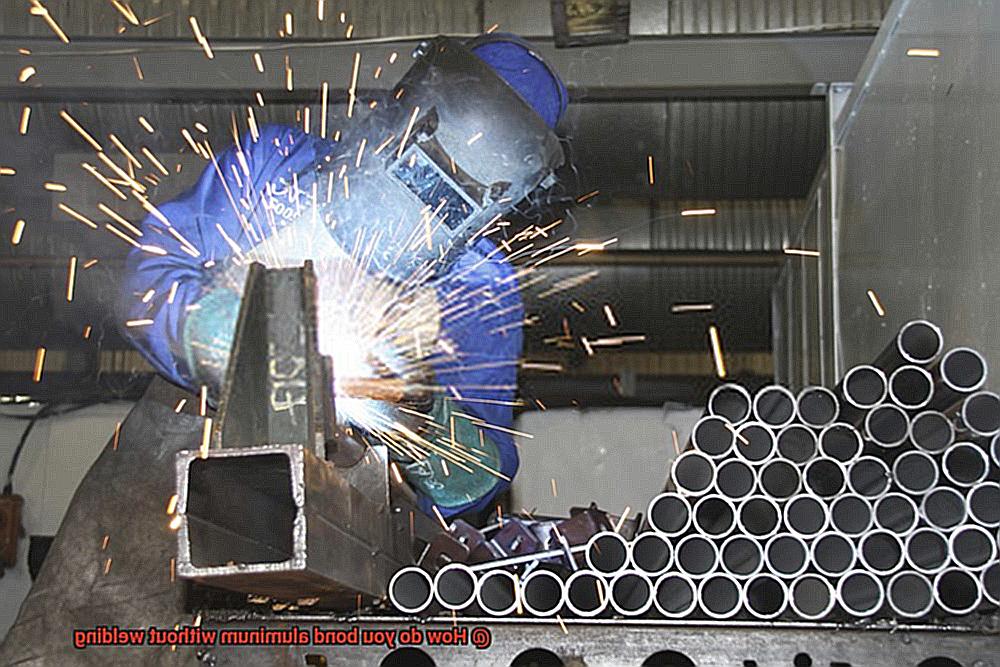
Flux-cored aluminum solder:
Another excellent option for soldering aluminum is flux-cored aluminum solder. This type of solder contains a flux core that aids in removing oxidation and impurities from the aluminum surface during the soldering process. The flux also promotes better wetting and bonding between the filler metal and the aluminum.
Consider the thickness of the aluminum:
When selecting a filler metal, it’s crucial to consider the thickness of the aluminum being soldered. Thin aluminum sheets or components require a low-temperature solder with a melting point below 450°F (232°C) to prevent distortion or damage to the material. On the other hand, thicker aluminum pieces may necessitate a higher-temperature solder with a melting point above 600°F (316°C) for a stronger bond.
Compatibility with base aluminum alloy:
Different aluminum alloys have varying compositions and properties that can impact bonding characteristics. It is essential to ensure that the chosen filler metal is compatible with the specific aluminum alloy being soldered. Consulting an expert or referring to manufacturer recommendations can help make an informed decision.
Application and environmental conditions:
Considering the intended application and environmental conditions that the bonded aluminum will be exposed to is crucial. If high temperatures or corrosive environments are anticipated, selecting a filler metal with superior heat resistance or corrosion resistance properties is vital for long-lasting performance.
Proper Preparation for Successful Soldered Joints
Achieving successful soldered joints when bonding aluminum without welding requires proper preparation. In this article, we will explore the essential steps and techniques that will help you create durable connections. From thorough cleaning and surface roughening to selecting the right flux and applying controlled heat, we’ve got you covered.
Step 1: Thoroughly Clean the Aluminum Surface
To ensure a strong bond, start by cleaning the aluminum surface thoroughly. Remove dirt, grease, and oxidation using solvents like acetone or isopropyl alcohol. Make sure the solvent evaporates completely before proceeding.
Step 2: Roughen the Surface for Better Adhesion
Improve adhesion by slightly roughening the aluminum surface. Use fine-grit sandpaper or a wire brush to create a textured surface that offers more area for solder adhesion.
Step 3: Apply a Suitable Flux
Choose a flux that is compatible with both the solder and aluminum. Flux removes remaining oxidation and enhances solder wetting. Rosin flux and water-soluble flux are common options, but select based on your specific materials and process.
Step 4: Heat the Aluminum Surface
Evenly heat the aluminum surface using a soldering iron or torch. Avoid overheating, as it can weaken the joint or damage the aluminum. Apply heat on one side of the joint while feeding solder from the opposite side. This allows solder to flow into the joint through capillary action, ensuring a strong bond.
Step 5: Maintain a Clean and Controlled Environment
Work in a well-ventilated area and take safety precautions like wearing gloves and eye protection. A clean environment prevents impurities that could affect joint quality.
Step 6: Inspect and Rework if Necessary
Inspect the joint after soldering for any defects or imperfections. If needed, reheat the joint and add more solder to improve the bond.
TlkE83JhUUI” >
Also Read: How To Fill Holes In Metal Without Welding?
Conclusion
In conclusion, the world of aluminum bonding without welding is a vast and exciting one, brimming with possibilities for both DIY enthusiasts and professionals. Alternatives such as adhesive bonding, mechanical fastening, soldering, and brazing offer unique benefits that open doors to innovative projects.
Adhesive bonding is a versatile technique that allows for the joining of intricate parts with complex geometries or thin-walled structures. It evenly distributes stress across the bonded joint, resulting in bonds that are both strong and durable. However, success hinges on meticulous surface preparation and careful adhesive selection.
Mechanical fastening provides a convenient option for applications requiring frequent maintenance or repairs. With easy disassembly and reassembly capabilities, it offers strength, reliability, and safety without the need for heat or electricity. Attention to proper torque application and consideration of corrosion and aesthetic factors are key when utilizing mechanical fasteners.
Soldering presents itself as an economical method that minimizes distortion compared to welding. Its versatility extends to compatibility with various metal types. To achieve successful soldered joints, it is crucial to select the right filler metal while considering surface preparation, strength requirements, and compatibility with the base aluminum alloy.
By understanding these alternative bonding techniques and carefully selecting the most suitable method for your needs, you can forge robust connections in aluminum without resorting to traditional welding methods.


